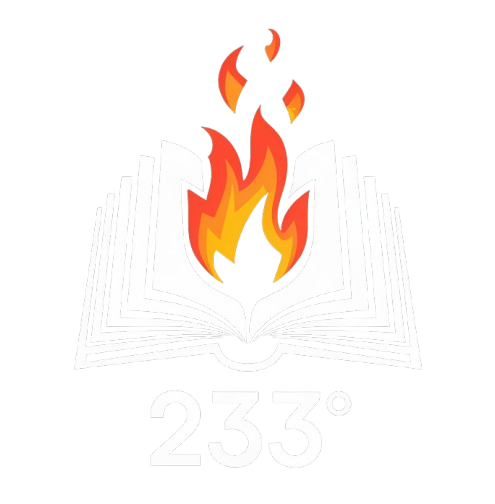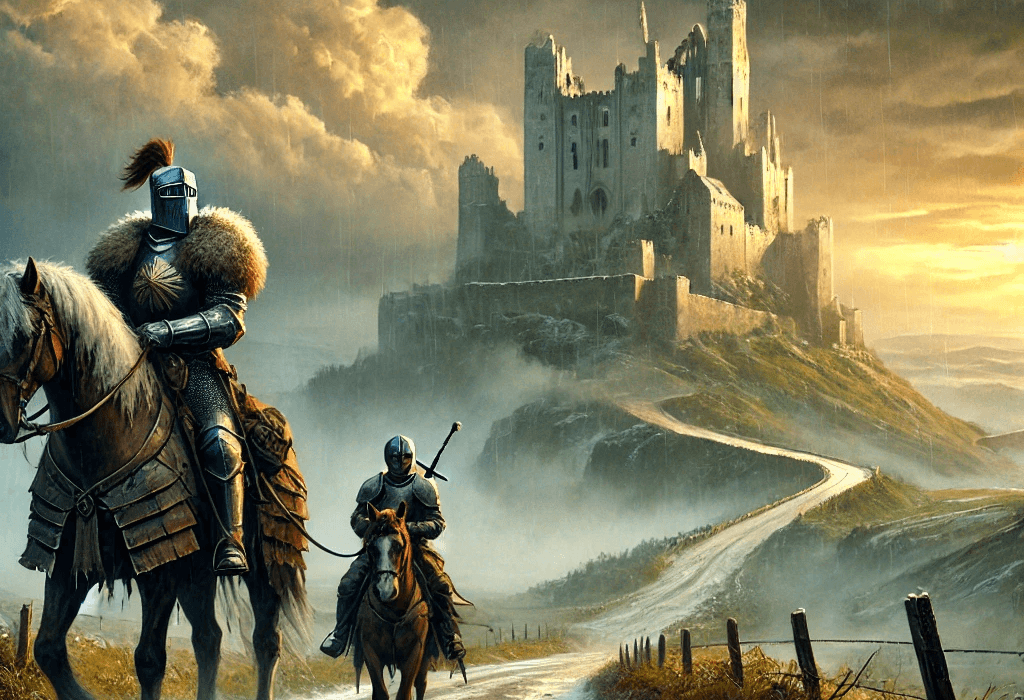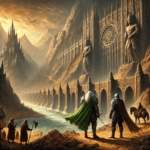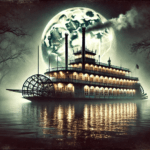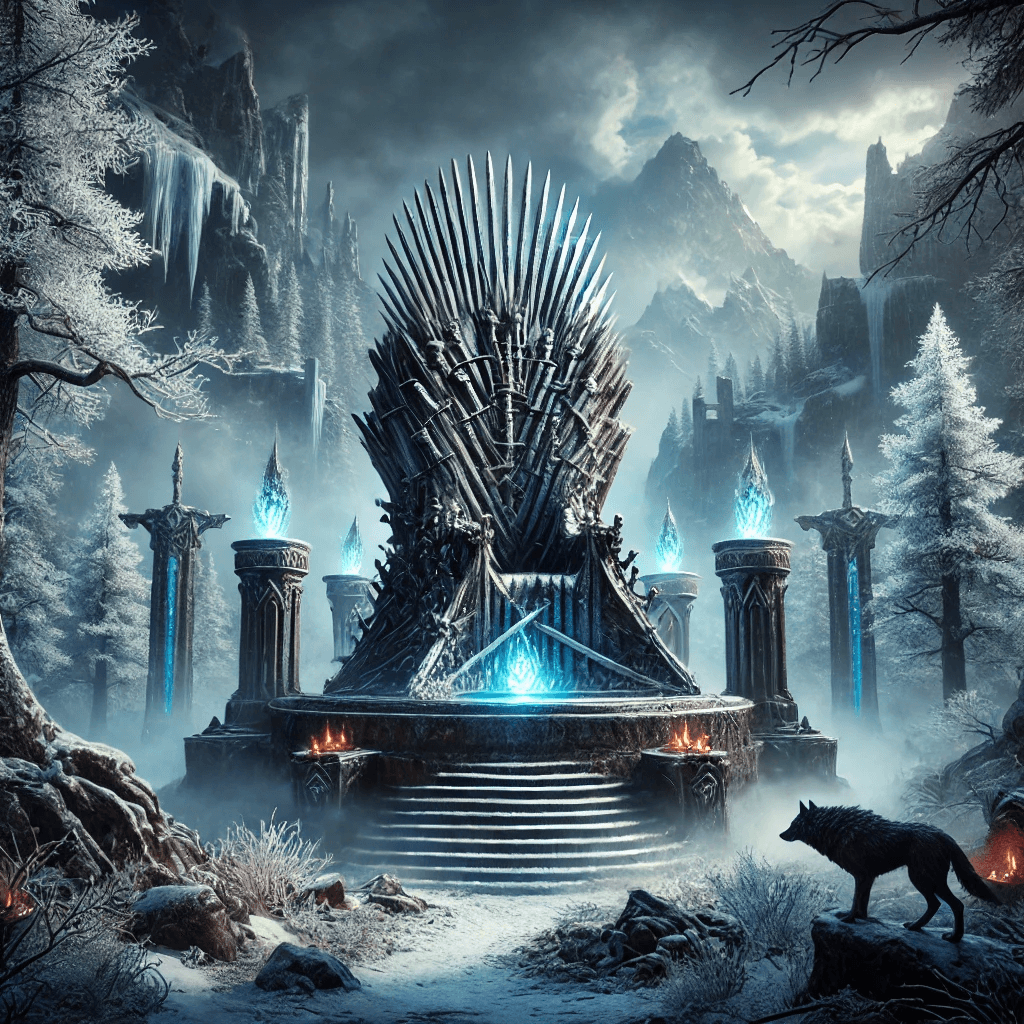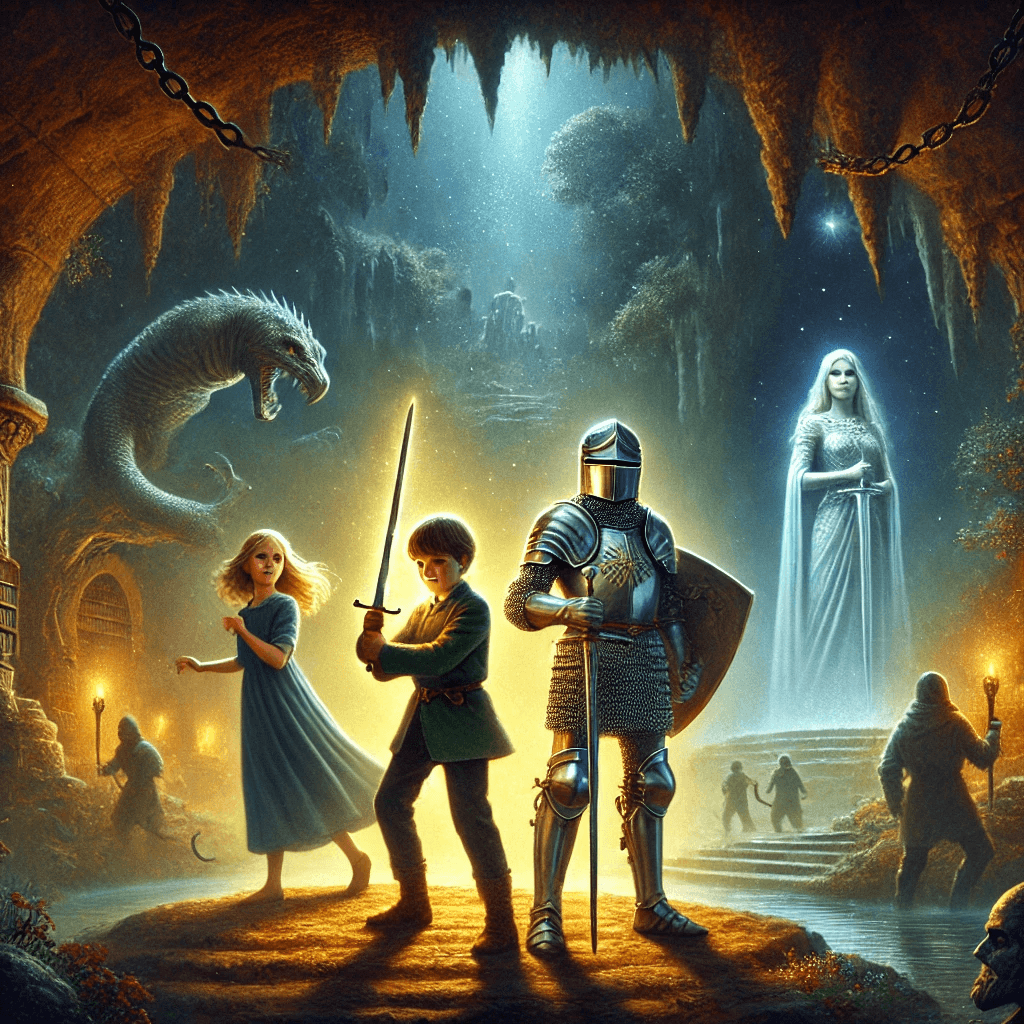The Mystery Knight by George R.R. Martin, published in 2010, is the third novella in the Tales of Dunk and Egg series, later collected in A Knight of the Seven Kingdoms. Set nearly a century before the events of A Song of Ice and Fire, the story follows Ser Duncan the Tall (Dunk), a humble hedge knight, and his squire, Egg, a Targaryen prince in disguise. They attend a wedding tourney that harbors dangerous secrets and political conspiracies, weaving themes of loyalty, identity, and ambition into the turbulent history of Westeros.
Plot Summary
Under a sky heavy with summer rain, Ser Duncan the Tall and his squire, Egg, departed Stoney Sept on their journey north. Dunk, a towering hedge knight of simple origins, rode his warhorse Thunder, while Egg, secretly Aegon Targaryen, followed astride Rain, leading their mule Maester laden with supplies. Passing through the town gates, they encountered the head of a hunchbacked septon impaled on a spike—a grim reminder of the price of treason under the reign of King Aerys I Targaryen and his Hand, Bloodraven. The septon had preached against Bloodraven, claiming the King’s Hand was a sorcerer and a kinslayer, whispering treason in the ears of restless lords. With unease in their hearts, Dunk and Egg pressed on, eager to leave such dark omens behind.
Their path soon crossed a lively party of knights and lords headed to Whitewalls, the seat of Lord Butterwell, for a grand wedding tourney. Among the riders were the affable Ser John the Fiddler, the grim Lord Gormon Peake, and the boorish Lord Alyn Cockshaw. The Fiddler, enchanted by Dunk’s immense stature, urged the hedge knight to join the festivities, hinting at rich rewards for skilled competitors. Though reluctant at first, Dunk was tempted by the prospect of food and coin and decided to attend, hoping to bolster his purse for their journey to Winterfell.
The castle of Whitewalls stood resplendent, its pale stone glinting in the sun like a beacon of wealth and vanity. As Dunk and Egg approached, they encountered other hedge knights, including the boastful Ser Glendon Ball, who claimed to be the son of the infamous Fireball, and the sardonic Ser Maynard Plumm. The knights shared tales around a fire, discussing the wedding and the promised prize of a dragon’s egg, a relic of the Targaryen dynasty.
The atmosphere at Whitewalls was charged with intrigue. Beneath the veneer of merriment, whispers of rebellion swirled. Dunk observed the gathering of lords with shadowed histories—men who had once fought for the Blackfyre Pretenders, bastards of House Targaryen who had challenged their trueborn kin for the Iron Throne. The memory of the Redgrass Field, where Daemon Blackfyre had fallen, loomed large, and the presence of Lord Peake, a staunch Blackfyre supporter, raised troubling questions.
The tourney began with much fanfare, knights donning bright colors and sigils to vie for glory. Dunk, ever modest, entered the lists with a plain shield and a heavy heart. His first tilt was against a knight of no great renown, and despite his doubts, Dunk’s sheer strength and skill unhorsed his opponent. The victory filled his purse with a ransom and his belly with a warm meal, a rare luxury for a hedge knight.
Meanwhile, Egg, mingling among the squires, gleaned valuable gossip. He overheard talk of Lord Butterwell’s divided loyalties and the wedding as a potential rallying point for Blackfyre loyalists. The dragon’s egg, he learned, was not merely a prize but a symbol of legitimacy, capable of uniting discontented lords under a single banner. Egg’s noble blood burned with indignation, but Dunk urged caution, reminding him of the danger in speaking out.
As the festivities wore on, the Fiddler’s true nature began to unravel. Beneath his charm lay ambition. He confided in Dunk his belief that destiny had chosen him for greatness. The hedge knight, unversed in the games of thrones, dismissed the claim as idle boasting. Yet, when the Fiddler hinted at a royal lineage and called Dunk “Ser Duncan the Tall of the Kingsguard,” unease gnawed at the knight. The words seemed a prophecy, one that clung to him like a shadow.
The turning point came when Dunk stumbled upon a secret meeting in the depths of Whitewalls. Lords Peake and Cockshaw, along with others, plotted to raise Daemon II Blackfyre, the Fiddler, as a new king. Their plan involved a staged rebellion, starting with the tourney as a smokescreen for their treachery. Dunk, realizing the gravity of their scheme, resolved to act, though his position as a lowly hedge knight left him powerless.
The next day, the jousts continued, the mood growing darker as tensions simmered beneath the surface. Ser Glendon Ball, ridiculed for his parentage, earned admiration by unhorsing seasoned knights, his determination a stark contrast to the decadence of the lords. Dunk, too, pressed forward, his strength earning him a place among the finalists. Yet the weight of the conspiracy loomed, his thoughts consumed by the question of how to thwart the rebellion.
When the Fiddler and Dunk faced each other in the final tilt, the stakes transcended mere glory. The Fiddler fought with reckless abandon, his skill undeniable, but Dunk’s size and resilience carried the day. The crowd erupted in cheers, but the moment was fleeting. As Dunk dismounted, a horn blast shattered the revelry. Bloodraven’s men had arrived.
The King’s Hand, a pale figure with a blood-red eye, descended upon Whitewalls with a host of archers and soldiers. The rebellion unraveled in an instant, its leaders arrested, their ambitions crushed beneath the weight of the Crown’s authority. Lord Butterwell’s castle, a monument to vanity, was stripped stone by stone, a warning to those who dared defy the Targaryens.
As the conspirators were led away, the dragon’s egg passed into Bloodraven’s possession. Dunk and Egg, weary and wiser, departed Whitewalls with their meager earnings. The road stretched ahead, fraught with uncertainty, but their bond, forged in hardship, remained unbroken. The knight and his squire rode on, the echoes of a rebellion that almost was fading into the mists of memory.
Main Characters
Ser Duncan the Tall (Dunk): A towering hedge knight of humble origins. Dunk’s honest nature, courage, and physical strength make him a compelling yet reluctant hero. He grapples with his identity and moral compass as he navigates the dangerous games of lords and knights.
Egg (Aegon Targaryen): Dunk’s precocious and sharp-tongued squire, who is secretly a prince of the Targaryen dynasty. His royal blood adds depth to his character, as he often wrestles with loyalty to his heritage versus his admiration for Dunk’s grounded principles.
Lord Gormon Peake: A shrewd and calculating lord with a history of rebellion, Peake serves as a major antagonist. His involvement in the tourney unveils a hidden agenda tied to the Blackfyre Pretenders.
Ser John the Fiddler: A charismatic but enigmatic mystery knight whose charm masks deeper ambitions. His true identity and motivations are key to the story’s twists.
Bloodraven (Brynden Rivers): The king’s Hand and a feared sorcerer-like figure. Though not physically present for most of the story, his influence looms large, embodying the kingdom’s political complexity.
Theme
Loyalty and Betrayal: The novella explores the tenuous nature of allegiance. Characters are torn between personal loyalty, political survival, and familial bonds.
Identity and Disguise: Masks and hidden identities dominate the narrative, as knights compete under false names, and Egg’s secret heritage contrasts Dunk’s straightforward honesty.
Power and Ambition: The story examines the lengths to which people will go for power, from the manipulative lords to the hopeful hedge knights seeking glory in the jousts.
Moral Complexity: As with much of Martin’s work, the lines between good and evil blur. Dunk’s struggle to navigate this murky world highlights the complexity of honor and justice.
Writing Style and Tone
George R.R. Martin’s writing style in The Mystery Knight is marked by vivid descriptions and a deep sense of immersion. His portrayal of the Seven Kingdoms is meticulously detailed, from the haunting imagery of the weirwood stumps to the grandeur of Whitewalls. Dialogue is sharp and layered, revealing the political subtext and personal stakes behind seemingly casual exchanges.
The tone is a masterful balance of intrigue and foreboding, laced with moments of humor and camaraderie, especially in the interactions between Dunk and Egg. Martin’s storytelling weaves suspense into every scene, keeping the reader engaged with his nuanced depiction of Westeros’ treacherous world.
We hope this summary has sparked your interest and would appreciate you following Celsius 233 on social media:
There’s a treasure trove of other fascinating book summaries waiting for you. Check out our collection of stories that inspire, thrill, and provoke thought, just like this one by checking out the Book Shelf or the Library
Remember, while our summaries capture the essence, they can never replace the full experience of reading the book. If this summary intrigued you, consider diving into the complete story – buy the book and immerse yourself in the author’s original work.
If you want to request a book summary, click here.
When Saurabh is not working/watching football/reading books/traveling, you can reach him via Twitter/X, LinkedIn, or Threads
Restart reading!

